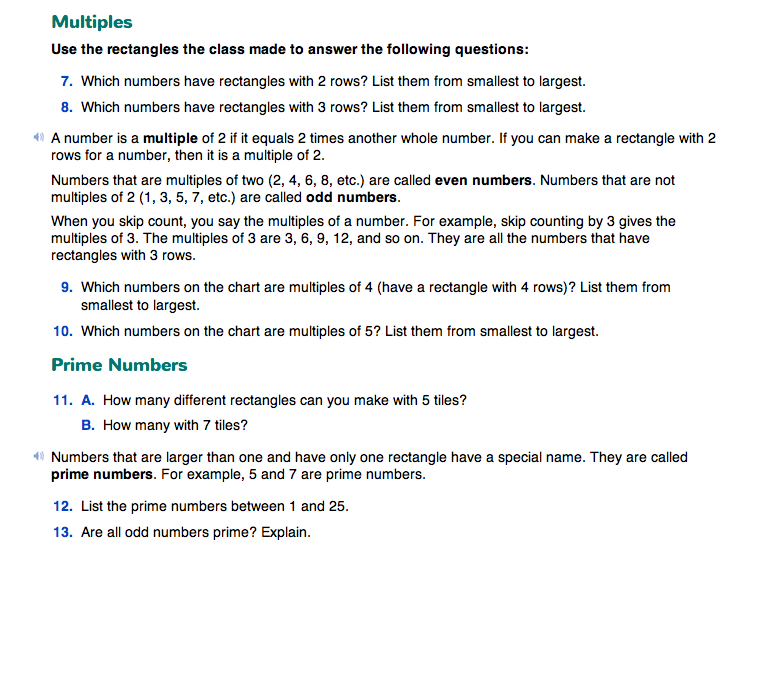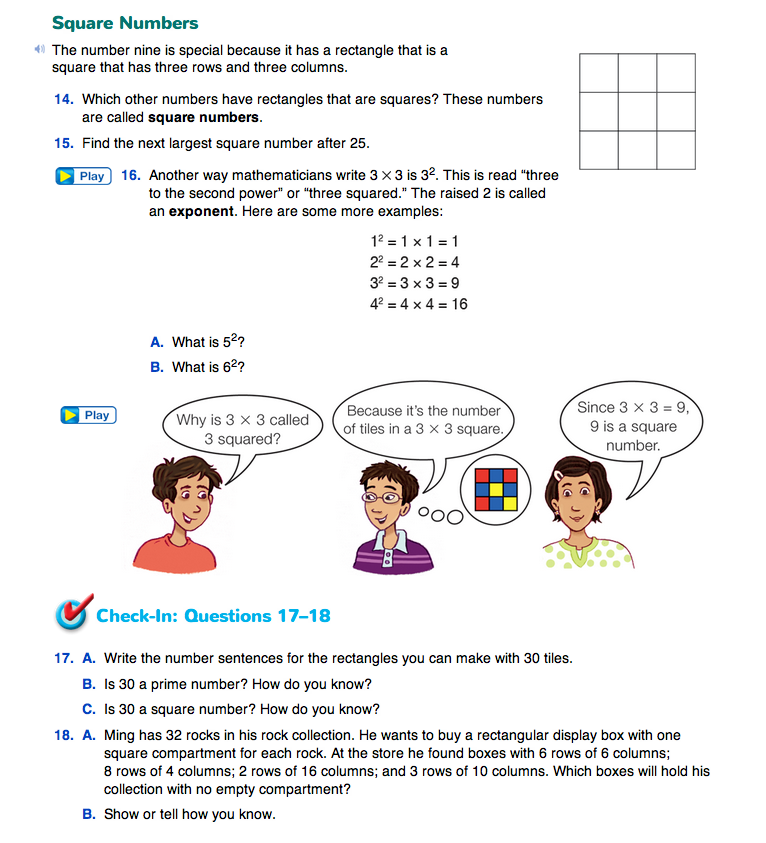Multiplication and Rectangles
Est. Class Sessions: 2–3Summarizing the Lesson
Multiples, Primes, and Square Numbers. After the class chart is complete, ask students to work on Questions 7–16 in the Multiples, Prime Numbers, and Square Numbers sections in the Student Guide.
A number is a multiple of 2, for example, if it equals 2 times another whole number. If you can make a rectangle with 2 rows for a number, then it is a multiple of 2. A number is a multiple of 3 if it can be made into a rectangle with 3 rows. Also, multiples of a number are the numbers you say when you skip count by that number (Questions 7–10).
Prime numbers are defined as numbers that are larger than one and have only one rectangle (Questions 11–13). We will return to prime numbers in Lesson 3 and define them in terms of their factors.
A nice feature of this activity is that students will see clearly why the square numbers have their names (Questions 14–16). Exponents are introduced as a way to write square numbers: 5 × 5 = 52. We will return to exponents in Lesson 7.
Students may want to color code the class chart to identify prime and square numbers.
After students have completed Questions 7–16, assign Check-In: Questions 17–18 to students as a way to assess their understanding of this lesson.















